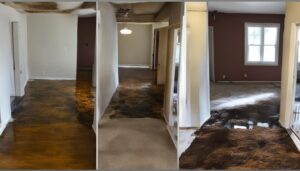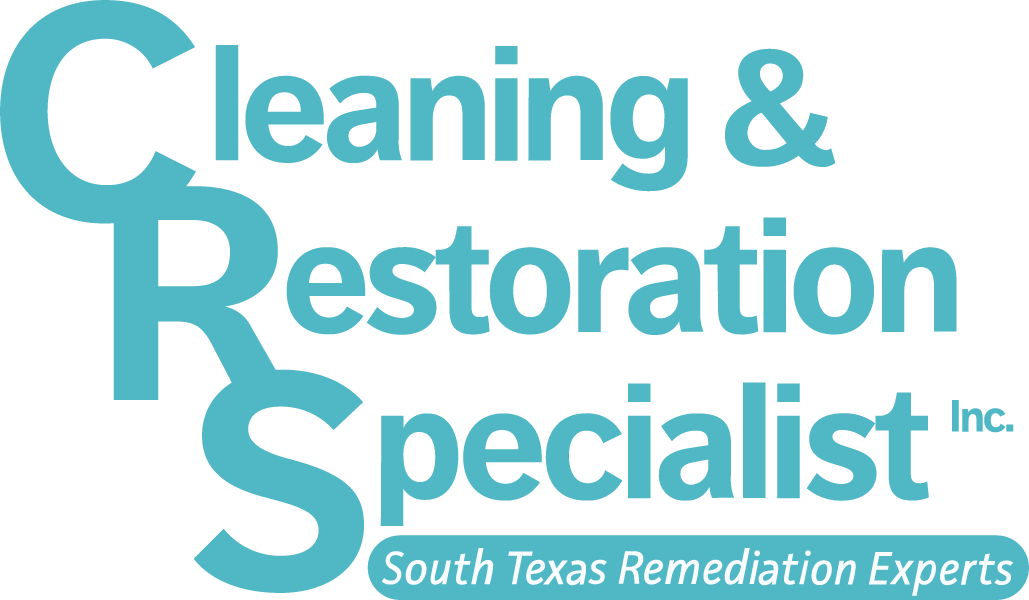Did you know that a burst pipe can release up to 4,500 gallons of water in just 24 hours? That’s equivalent to the amount of water an average American household uses in a month! The impact of a burst pipe can be catastrophic, causing extensive water damage and putting a dent in your wallet. It’s crucial to be able to identify the signs of a burst pipe so you can take immediate action to mitigate the damage and avoid costly repairs.
Key Takeaways
- Knowing the signs of a burst pipe is essential to minimize water damage and costly repairs.
- A burst pipe can release up to 4,500 gallons of water in just 24 hours.
- Identifying signs such as water pressure fluctuations, visual clues, and unusual odors can indicate a burst pipe.
- Taking immediate action when detecting a burst pipe can help prevent further damage and potential health hazards.
- Regularly inspecting your plumbing system and contacting a professional plumber can help mitigate the risks associated with burst pipes.
Understanding Pipe Bursts and Potential Causes
A pipe burst occurs when a plumbing pipe develops a crack or hole, leading to uncontrolled water leakage. This can result in extensive water damage and the need for costly repairs if not addressed promptly. It is important to understand the potential causes of pipe bursts in order to take proactive measures to prevent them.
There are several common reasons for pipe bursts:
- Freezing temperatures: When water freezes inside a pipe, it expands and puts pressure on the pipe walls, causing them to burst.
- Corrosion: Over time, pipes can corrode from the inside, weakening their structure and making them more susceptible to bursting.
- Age and wear: Older pipes are more likely to develop cracks and leaks due to wear and tear.
- Water pressure surges: Sudden changes in water pressure, such as from a water main break or a malfunctioning pressure regulator, can cause pipes to burst.
- Clogs and blockages: Buildup of debris, grease, or mineral deposits can create blockages in pipes, leading to increased pressure and potential bursts.
- Tree root intrusion: Tree roots seeking water can penetrate pipes, causing cracks and leaks.
- Poor installation: Improperly installed pipes can have weak joints or connections that are prone to bursting.
- Ground shifting: If the ground around the pipes shifts, it can cause stress on the pipes and lead to bursts.
- High water pressure: Excessive water pressure can strain the pipes and cause them to burst.
- Physical damage: Accidental damage from construction work or other external forces can result in pipe bursts.
By being aware of these common causes, you can take preventive measures such as insulating pipes in colder temperatures, conducting regular maintenance and inspections, addressing water pressure issues, and avoiding putting non-flushable items down drains. Taking these precautions can help reduce the risk of pipe bursts and protect your home from water damage.
Identifying the Early Warnings: Water Pressure and Pipe Noises
Early detection of a burst pipe is crucial in preventing extensive water damage and costly repairs. By being aware of the early signs, such as water pressure fluctuations and pipe noises, you can take immediate action and mitigate the risks associated with burst pipes.
One of the common early warning signs of a potential burst pipe is reduced water pressure in your faucets. You may notice a weak spray from the showerhead or a slower flow of water from the taps. These water pressure fluctuations can indicate a problem within the plumbing system, possibly caused by a burst pipe.
Another clue to watch out for is unusual sounds in the pipes. When turning on your faucets, listen for strange noises like loud banging, rattling, or hissing. These noises may suggest that water is trying to pass through a restricted or damaged pipe, highlighting the need for immediate attention.
Visual Clues: Water Damage and Discoloration
When it comes to identifying a burst pipe, visual signs play a crucial role. By examining water damage and discoloration in your home, you can pinpoint potential areas of concern. These visual clues can help you take prompt action and prevent further damage.
One common visual sign of a burst pipe is water stains or wet spots on floors, walls, or ceilings. If you notice any discolored patches or areas that are consistently damp, it may indicate a pipe has burst. Water that seeps into nearby surfaces can cause damage and lead to discoloration.
Furthermore, keep an eye on the color of the water coming out of your faucets. If the water appears discolored, such as having a brownish or yellowish tint, it could be a clear indication of a burst pipe.
Remember, early identification and swift action are crucial to minimizing water damage and potential structural issues. If you observe any visual signs like water stains, discoloration, or discolored water, it’s essential to contact a professional plumber to locate and repair the burst pipe effectively.
What are the signs of a burst pipe?
In addition to water pressure fluctuations and visual clues, there are other signs that can indicate a burst pipe. Unpleasant odors, such as a musty or mildew-like smell, can be a result of stagnant water from a hidden burst pipe. A sudden increase in water bills without any obvious explanation may also indicate a leak from a burst pipe. This section will explore these additional signs and their significance.
When it comes to identifying a burst pipe, it’s important to pay attention to any unpleasant odors in your home. Indications of a burst pipe can include a musty or mildew-like smell, which is often caused by stagnant water from a hidden burst pipe. If you notice any unusual odors, it’s essential to investigate further to determine the source of the smell and whether it could be related to a burst pipe.
Another symptom of a burst pipe is a sudden increase in your water bills. If you haven’t been using more water than usual but notice a significant spike in your water expenses, it could indicate a leak from a burst pipe. Signs of a burst pipe should never be ignored, as they can lead to extensive water damage, structural issues, and costly repairs if left unaddressed.
By staying vigilant for these indications of a burst pipe and taking prompt action, you can avoid potential damage and minimize the associated expenses. If you suspect a burst pipe in your home, it’s essential to contact a professional plumber to identify and repair the issue as soon as possible.
The Olfactory Giveaway: Recognizing Scent as a Symptom
When it comes to detecting a burst pipe, your sense of smell can be a valuable tool. Unpleasant or musty odors that cannot be traced to a specific source may indicate a hidden water leak from a burst pipe. These olfactory signs of a burst pipe can be particularly useful when other visual or audible indicators are not present.
Recognizing smells as a symptom of a burst pipe involves being attentive to any foul or musty odors in your home that are not typical or can’t be explained by other factors. It’s important to note that these odors might not always be strongest near the leak itself, as the water may seep into various areas within the walls or flooring.
If you detect strange smells in your home and suspect a burst pipe, it is crucial to take immediate action to prevent further damage. Here are the steps you should follow:
- Locate the source: Try to determine where the odor is coming from and if it is strongest in a specific area of your home. This can help narrow down the potential location of the burst pipe.
- Inspect for visible signs: Check nearby areas for any visible water stains, dampness, or discoloration. These visual clues can further confirm the presence of a burst pipe.
- Contact a professional plumber: It is important to seek the expertise of a licensed plumber who can accurately identify and repair the burst pipe. They will have the necessary knowledge and tools to address the issue effectively.
- Take precautionary measures: While waiting for the plumber to arrive, it’s essential to minimize the water damage by shutting off the main water supply to your home. This can help prevent further leakage and reduce the potential for structural damage.
Remember, recognizing the olfactory signs of a burst pipe is just one aspect of identifying and addressing the issue. It’s crucial to seek professional assistance to ensure proper repairs and prevent any long-term consequences.
Consequences of Inaction: Rising Water Bills and Structural Damage
Failing to address a burst pipe promptly can have severe consequences. The consequences of inaction include rising water bills and structural damage to your home.
When a pipe bursts, it often leads to continuous water flow, resulting in a significant increase in your water bills. This continuous leakage can go unnoticed for weeks or even months, causing a substantial financial burden. Addressing the burst pipe promptly can help you prevent unnecessary expenses and save money in the long run.
In addition to rising water bills, a burst pipe can also cause extensive water damage to your home. The water that leaks from the burst pipe can seep into walls, floors, and ceilings, causing structural damage. Over time, this can weaken the structural integrity of your home, making it vulnerable to collapses or other major issues.
Furthermore, the presence of excess water and moisture from the burst pipe can create the perfect environment for mold and mildew growth. Mold can spread rapidly and release harmful spores into the air, posing potential health hazards to you and your family. It is essential to address a burst pipe promptly to minimize the risk of mold infestation.
Taking immediate action when you suspect a burst pipe is crucial to prevent further damage and associated costs. Contacting a professional plumber to repair the burst pipe and assess the extent of the damage will help you mitigate the consequences of inaction.
Conclusion
Identifying the signs of a burst pipe and taking swift action is crucial to prevent further damage and costly repairs. Regularly inspecting your plumbing system, being alert to signs such as water pressure fluctuations, visual clues, unpleasant odors, and increased water bills, and promptly contacting a professional plumber can help mitigate the risks associated with burst pipes.
Throughout this article, we discussed the common signs and symptoms of a burst pipe, including water pressure fluctuations, visual clues such as water damage and discoloration, unpleasant odors, and increased water bills without explanation. Understanding the potential causes of burst pipes, such as freezing temperatures, corrosion, and water pressure surges, can also help you prevent future incidents.
Remember, always prioritize proactive measures to safeguard your home. Conduct regular plumbing system inspections, address any water pressure fluctuations or unusual noises promptly, and promptly seek professional assistance when needed. By taking these steps, you can minimize the risks associated with burst pipes and ensure the safety and integrity of your home.









